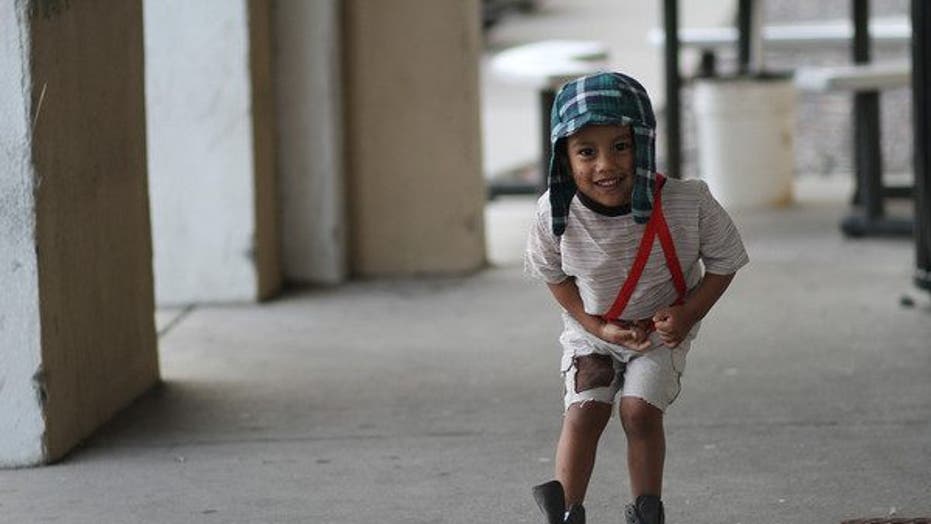Just three months after moving to the United States from Argentina, Paula and David Zopetti brought their first born, Jenny, home from the hospital. It was an exciting time of their life, filled with new experiences: they had just moved into their first little apartment in a new country, they were learning a new language, welcoming a new baby, and adjusting to a new culture.
On the night they brought Jenny home, they received an unexpected knock at the door. “Trick-or-treat,” chimed a group of children in costumes as they held out their oversized bags in hopes for a handful of candy. It was Halloween night. Paula and David had seen Halloween in the movies and they remembered someone telling them about trick-or-treating on October 31st, but with their minds turned to their new baby and the stress of settling into life in a new country, they had forgotten all about it.
We didn’t have candy. We had a new baby. We didn’t know it was going to be a big deal not having candy.
“I thought, ‘These people really want candy,’” Paula said. “I never pictured it actually happening until it did.”
Paula and David turned away the empty-handed trick-or-treaters and closed the door. The same scenario happened a few more times before they finally turned off their lights and went to bed, hoping they wouldn’t have to turn away any more costume-wearing kids.
“We didn’t have candy. We had a new baby,” Paula said. “We didn’t know it was going to be a big deal not having candy.”
Caught off guard, the Zopetti family’s first Halloween was somewhat of a surprise, but it didn’t take long before they started adopting the American Halloween traditions.
“Each year, you add a little more until you find yourself doing things that you never thought you would do,” said Paula.
The next year, she stocked up on a full supply of Halloween candy, and now, 15 years later, Paula even dresses up in costumes.
“You want to connect and integrate yourself into the culture,” said Paula.
New immigrants are often caught off guard by the haunted traditions of Halloween. But they learn to adapt, and make it their own tradition. But even though they integrate themselves into American culture, they still stick to their Latino roots – even if they have been here almost all of their lives.
Nidia Romero, who moved to the U.S. from Mexico when she was a young girl, says even though she embraces the American culture, she integrates her Mexican traditions into celebrating Halloween with her husband and children.
“We just have a bunch of food and music and we have stuff for the kids,” Romero said. “That’s what makes it Latino, is that that we’re together with our family and we just have like a party.”
But besides the music, dancing, and a room full or abuelita’s best recipes, this year, Romero even added an extra Latino spice to the Halloween festivities when her kids asked if they could dress up as characters from a few of their favorite Mexican TV shows: El Chavo del Ocho and El Chapulín Colorado.
“My husband and I, we grew up watching those shows and we love those shows,” Romero said. “And when my son said he wanted to be that, we were like, ‘You know that’s pretty original.’”
And even though finding the costumes was not as easy as perusing the isles of their local Halloween store, Romero and her husband decided to make it happen.
“I think it's important that they know where we came from and all the beautiful stuff that we have like all the holidays or traditions that we have,” Rodriguez said. “I mean, it’s different over here. I think it’s important that they know where we come from and how we do stuff.”
But no matter how Hispanics add bits and pieces of their roots to Halloween, most say that it’s not Latino unless there’s a big fiesta.
“As Latinos, we try to make everything a party, have lots of food, different kinds of food,” Rodriguez said. “There’s always music at all of our parties and dance. That’s our thing. We always want to dance.”

